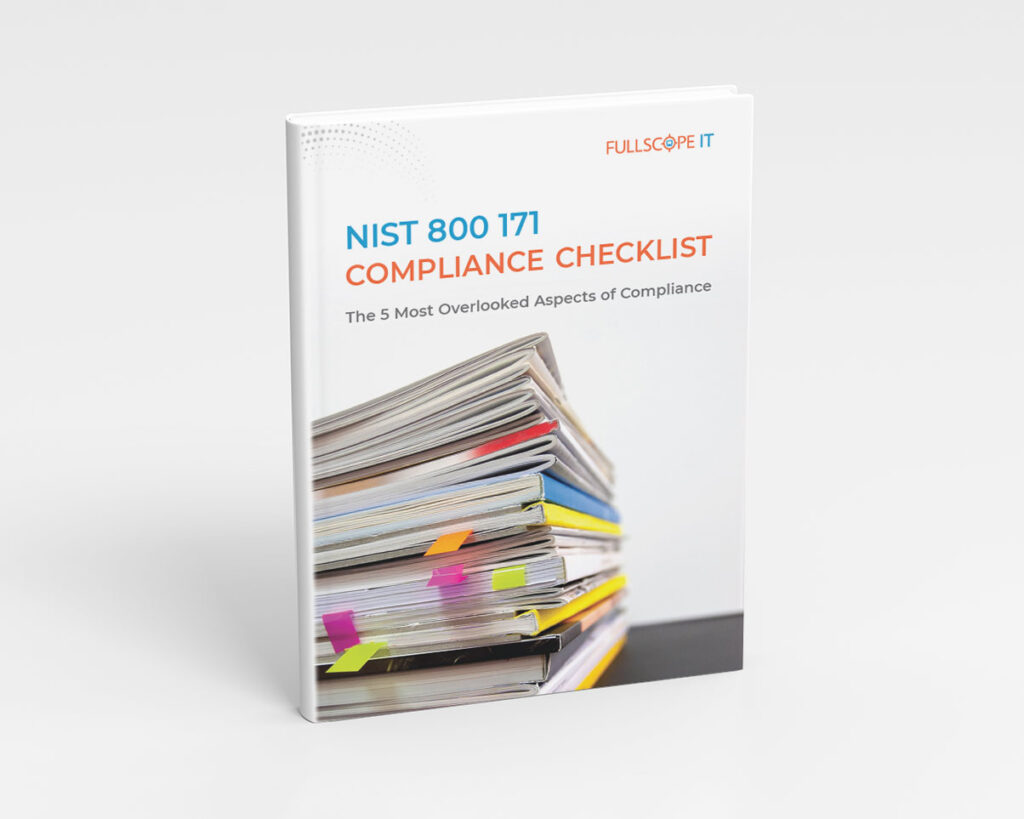Top Cyber Threats for Businesses in 2024
As we gear up for 2024, cybersecurity remains a top-of-mind concern for businesses of every size. It’s a digital world out there, brimming with risks and opportunities. With the global cost of cybercrime expected to hit a jaw-dropping $10.5 trillion by 2025, it’s clear we’re in a race against sophisticated cyber threats.
The upcoming year brings a mix of familiar foes and emerging threats. We’re talking about cunning social engineering attacks, third-party security risks that can sneak in through the back door, cloud vulnerabilities up in the digital skies, and ransomware attacks that can lock up your business tight. And that’s just the tip of the iceberg.
At FullScope IT, we believe knowledge is power. Understanding these threats is the first step toward defending against them. We’re here to shed light on these challenges and arm you with the strategies to stay secure. Let’s dive into the cybersecurity world and prepare you for what 2024 has in store.
Check out our blog post, Top Cybersecurity Threats in 2023, for a look back at last year.
Social Engineering Attacks
Social engineering remains a top threat in the cybersecurity world in 2024. Why? Because it’s much easier to trick a person than to crack a code. This tactic plays on human error, not technical gaps. And believe it or not, it’s incredibly effective.
Here’s a fact that might surprise you: 85% of data breaches involve a human element, according to Verizon’s Data Breach Investigations Report. Cybercriminals are masters at manipulating people to get what they want – like sensitive employee data and login credentials.
Today, over 75% of targeted cyberattacks start with an email. Phishing, a kind of social engineering, is often the starting point for these attacks. And with generative AI on the rise, these phishing attempts are becoming more convincing and harder to spot.
Tip: Invest in regular employee training. Make sure your team knows how to spot and report suspicious emails. Remember, staying informed is your first line of defense against these cunning social engineering strategies.
Third-Party Security Risks
In 2024, third-party security risks are more than just a footnote. As you lean on freelancers and external contractors, remember: their vulnerabilities can quickly become yours. In fact, over half of businesses now prefer hiring freelancers, especially since remote work became the norm. But this shift brings its own set of security challenges.
Take the 2021 incident with the US Colonial Pipeline. Hackers accessed it using compromised credentials, exploiting a VPN without multi-factor authentication. It’s a stark reminder that the security of your network is only as strong as its weakest link.
Tip: Tighten up your network access controls. Make sure you’re not just handing out the keys to your digital kingdom. Regularly assess and fortify the security protocols of your third-party partners. It’s all about creating a security chain that’s strong at every link.
Configuration Mistakes
Even the smallest mistake in setting up your security systems can open a door for cybercriminals. It’s a tricky issue because, let’s face it, we’re all human and mistakes happen. But when it comes to cybersecurity, these slip-ups can be costly.
Cybersecurity company Rapid7 found that 80% of their external penetration tests discovered exploitable misconfigurations. And when they got internal access? That number jumped to 90%. It’s clear that even the pros can miss a spot or two.
Ongoing stress, like the aftermath of the COVID-19 pandemic and financial pressures, can make us more prone to errors. A report by Lyra Health shows 65% of workers feel their job performance is directly impacted by their mental health. That means more potential for mistakes, especially in IT security.
Tip: Regularly review and audit your IT configurations. Ensure your team is well-trained and supported, especially under stress. It’s not just about installing security tools; it’s about making sure they’re set up correctly and updated regularly. Let’s keep those cybersecurity doors locked tight!
Cloud Security
Cloud computing is everywhere. But with great convenience comes great responsibility, especially when it comes to security. Cloud vulnerabilities have shot up by 150% in the last five years. That’s a big deal for any business floating up in the cloud.
Verizon’s Data Breach Investigations Report found that over 90% of breaches involved web application vulnerabilities. That’s a huge chunk of the security breaches pie. It means businesses like yours need to pay extra attention to how you’re securing your cloud-based apps.
Gartner reports that cloud security is the fastest-growing cybersecurity market segment. It jumped a whopping 41% from 2020 to 2021. This trend isn’t slowing down and for a good reason. As more businesses shift to the cloud, the need for ironclad cloud security skyrockets.
Tip: Regularly review and update your cloud security measures. Ensure your web applications are locked down tight and monitor them like a hawk. Cloud computing is powerful, but let’s make sure it’s also safe.
Internet of Things (IoT)
The Internet of Things (IoT) is more than just a tech buzzword – it’s a growing part of our daily lives. With 70% of households having at least one smart device, the IoT world is expanding fast, and so are its security risks.
Did you know the average smart device gets attacked within five minutes of connecting to the internet? That’s alarmingly fast. And for a smart home with a range of IoT devices, it could face up to 12,000 hacking attempts in a single week. The more IoT devices we use, the more opportunities hackers have to sneak in.
It’s not just personal devices at risk. Businesses are increasingly relying on IoT technology, which means they’re also exposed to these threats. Experts predict that by 2025, over a quarter of all cyberattacks against businesses will target IoT devices. That’s a significant chunk of potential security headaches.
Tip: Regularly update your IoT devices and monitor them for suspicious activities. Implement strong network security that keeps these devices in check. In the world of IoT, being smart about security is the best way to keep those cyber threats at bay.
Ransomware Attacks
Ransomware is a big deal in 2024, and it’s not just about locking up your data anymore. The stakes have risen drastically. Think about this: between 2018 and 2020, the average ransom fee jumped from $5,000 to a whopping $200,000. That’s enough to make any business owner’s heart skip a beat.
The impact of ransomware goes beyond just the ransom payment. There’s also the downtime to consider. On average, businesses face 21 days of system downtime following a ransomware attack. That’s three weeks of lost productivity and potentially lost income. And in 2021, a significant 66% of cybersecurity professionals reported their companies suffered major revenue losses due to ransomware.
Microsoft reports that 96.88% of ransomware infections take less than four hours to infiltrate their target. The fastest ones? They can seize control of a system in under 45 minutes.
Tip: Regular backups and a solid incident response plan. Make sure your backups are frequent and tested for quick recovery. Strengthen your defenses with up-to-date security measures and employee awareness training. Ransomware might be a growing threat, but with the right preparation, it doesn’t have to be your business’s nightmare.
Poor Data Management
Managing your data smartly is more important than ever in 2024. Every four years, the amount of data we create doubles, but here’s the kicker: over half of it never gets used or analyzed. This excess data isn’t just clutter; it’s a potential security risk.
Mishandling data can lead to serious breaches, which can be as damaging as high-tech cyber attacks. For example, in 2018, Aetna faced a $17 million penalty for a simple mailing error. It shows how costly poor data management can be, both financially and reputationally.
In 2024, the trend is shifting from storing mountains of data to keeping only what’s necessary – the ‘right data.’ This approach helps reduce confusion and vulnerability. However, sorting the essential data from the chaff often relies on automation, which brings its own set of risks.
Tip: Regularly review and clean up your data storage. Keep only what you need and make sure it’s well-protected. And when it comes to automation, ensure those systems are secure and up-to-date. Good data management isn’t just about organization; it’s a key part of your cybersecurity defense.
Looking Ahead: Preparing for the Future
As we look forward to the rest of 2024, staying ahead in cybersecurity is key for every business. The digital landscape is always changing, and so are the strategies of cybercriminals. It’s not just about reacting to threats; it’s about anticipating and preparing for them.
Here at FullScope IT, we’re all about proactive cybersecurity. We understand that every business is unique, and so are its security needs. Our goal is to provide tailored solutions that address current threats and prepare you for future challenges.
As a managed IT services provider, FullScope IT is here to enhance your business’s cybersecurity posture. We offer the expertise and tools to help you navigate these challenges. Think of us as your cybersecurity ally, ready to help safeguard sensitive information and keep your operations running smoothly.
With FullScope IT by your side, you can face the future with confidence, knowing your business is equipped to handle whatever cyber challenges come your way.
Ready to take the next step in protecting your business from cyber threats? Contact us today to learn more about our services and how we can help.
Want more managed IT tips? Check out our Cybercast, FullScope IT: Safeguarding the Digital Frontier.










